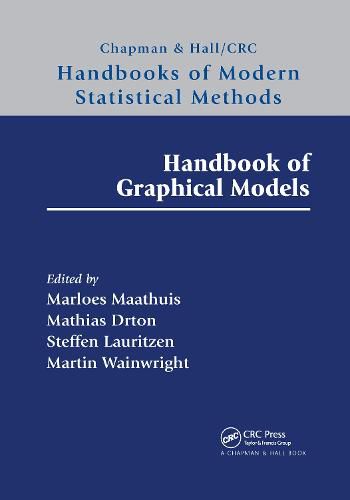Readings Newsletter
Become a Readings Member to make your shopping experience even easier.
Sign in or sign up for free!
You’re not far away from qualifying for FREE standard shipping within Australia
You’ve qualified for FREE standard shipping within Australia
The cart is loading…






A graphical model is a statistical model that is represented by a graph. The factorization properties underlying graphical models facilitate tractable computation with multivariate distributions, making the models a valuable tool with a plethora of applications. Furthermore, directed graphical models allow intuitive causal interpretations and have become a cornerstone for causal inference.
While there exist a number of excellent books on graphical models, the field has grown so much that individual authors can hardly cover its entire scope. Moreover, the field is interdisciplinary by nature. Through chapters by leading researchers from different areas, this handbook provides a broad and accessible overview of the state of the art.
Features:
Contributions by leading researchers from a range of disciplines Structured in five parts, covering foundations, computational aspects, statistical inference, causal inference, and applications Balanced coverage of concepts, theory, methods, examples, and applications Chapters can be read mostly independently, while cross-references highlight connections
The handbook is targeted at a wide audience, including graduate students, applied researchers, and experts in graphical models.
$9.00 standard shipping within Australia
FREE standard shipping within Australia for orders over $100.00
Express & International shipping calculated at checkout
A graphical model is a statistical model that is represented by a graph. The factorization properties underlying graphical models facilitate tractable computation with multivariate distributions, making the models a valuable tool with a plethora of applications. Furthermore, directed graphical models allow intuitive causal interpretations and have become a cornerstone for causal inference.
While there exist a number of excellent books on graphical models, the field has grown so much that individual authors can hardly cover its entire scope. Moreover, the field is interdisciplinary by nature. Through chapters by leading researchers from different areas, this handbook provides a broad and accessible overview of the state of the art.
Features:
Contributions by leading researchers from a range of disciplines Structured in five parts, covering foundations, computational aspects, statistical inference, causal inference, and applications Balanced coverage of concepts, theory, methods, examples, and applications Chapters can be read mostly independently, while cross-references highlight connections
The handbook is targeted at a wide audience, including graduate students, applied researchers, and experts in graphical models.